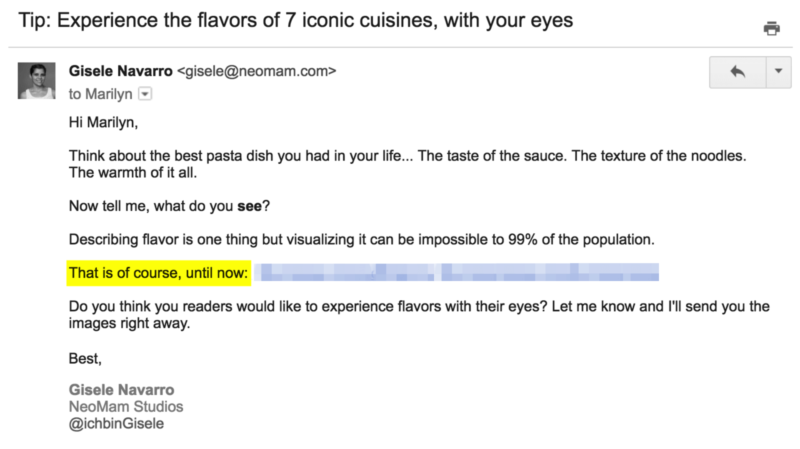
Link building starts with an email between two people.
More often than not, these are two people who don’t know each other. Yes, you know who this person is since you’re sending the email, and you think she will love your content. But be honest, you’re really a complete stranger to her.
Now add the fact that she probably has 30 or more unopened emails sitting in her inbox. How will your email catch her attention?
Let’s say you wrote an eye-catching subject line that made her open your email immediately. Does that guarantee she’ll read through your email and give you a link?
Not quite.
She doesn’t know you, she doesn’t owe you anything. If you want to get her attention and a link, you need to pitch your story to her.
You can’t pitch her if she stops reading right then and there; you need to grab her attention with the first sentence.
And the next.
And the one after that.
Do you see where I’m going with this?
Your job is done only when she’s read the full email, checked out your content, shared your stuff and linked to it. That’s a lot to ask from someone who probably received a dozen emails just like yours on the same day.
When you consider that roughly 269 billion emails were sent and received each day in 2017, it’s clear that link builders are facing serious competition to get their emails read.

So how can you make sure that your email doesn’t get trashed, archived or marked as spam seconds after it landed in the desired inbox?
Enter grease-slide copy
Grease-slide copy is a copywriting technique used to keep readers glued to the page. Phrases like:
But wait – there’s more.
Yes, you read that right…
We’re not through yet.
These types of sentences keep you reading through the copy almost without you realizing it. The whole point of grease-slide words and phrases is simple, once you start reading, you can’t stop reading.
It’s the perfect tool for an outreach email because it helps you quickly connect to someone who probably doesn’t know who you are.
Outreach emails
There are hundreds of words and phrases that fall into the grease-slide category but not all of them will help you get links. I’ve tested many of them and have identified four distinct types of grease-slide copy that works.
1. Setting the scene
What better way to get your foot in the door than sparking a bit of intrigue? Setting the scene allows you to create a mental image in your recipient’s mind, and this is an invaluable tool that you can use right at the start of your pitch:

Use these phrases to turn the opening of your pitch into a call for adventure:
- Picture this.
- It begins with a feeling of.
- Think about this for a moment.
- Just imagine.
- You know the score.
2. Getting them on your side
If you can show you’re on their emotional side, they are more likely to keep reading.
This is also a very effective way to turn a simple pitch into an emotional experience:

Use these phrases to make your recipient feel what you feel:
- We’ve all been there.
- OK, I know what you’re thinking.
- I know the feeling.
- We all do it.
- It’s not just you who …
3. Making a point
You will leave a much stronger impression if you use grease-sliding phrases to help you command their attention (or create a temporary moment of suspense) right before you get down to business:

Use these phrases whenever you’ll be making an important point you don’t want the recipient to miss:
- Here’s the deal:
- So what’s it all mean?
- But there’s one problem.
- Bottom line:
- Here’s another way to think about it.
4. Sliding them into your content
This is my favorite tactic. When pitching, I drop the uniform resource locator (URL) to the content I’m promoting into my email, so I use grease-sliding phrases to ensure the recipient feels the urge to click on the link:

Use these phrases to ensure that your pitch is not the end, but just the beginning:
- Until now:
- Not exactly:
- But that’s just the tip of the iceberg.
- Here’s why:
- It’s (faster) (better) (longer) … than you think.
Every word matters
A long-winded introduction, too much information and never-ending paragraphs can be the difference between getting a link and your email getting trashed.
When it comes to outreach, there’s a myriad of different styles, but whatever your personal style, it doesn’t hurt to apply tried and tested copywriting techniques. When you’re pitching your content to a person who doesn’t know you, every word matters.
Next time you’re writing an outreach email, try incorporating at least one of these grease-slide phrases.
Now, go get some links!
The post How to turn a boring email into an irresistible link pitch appeared first on Search Engine Land.
No comments:
Post a Comment